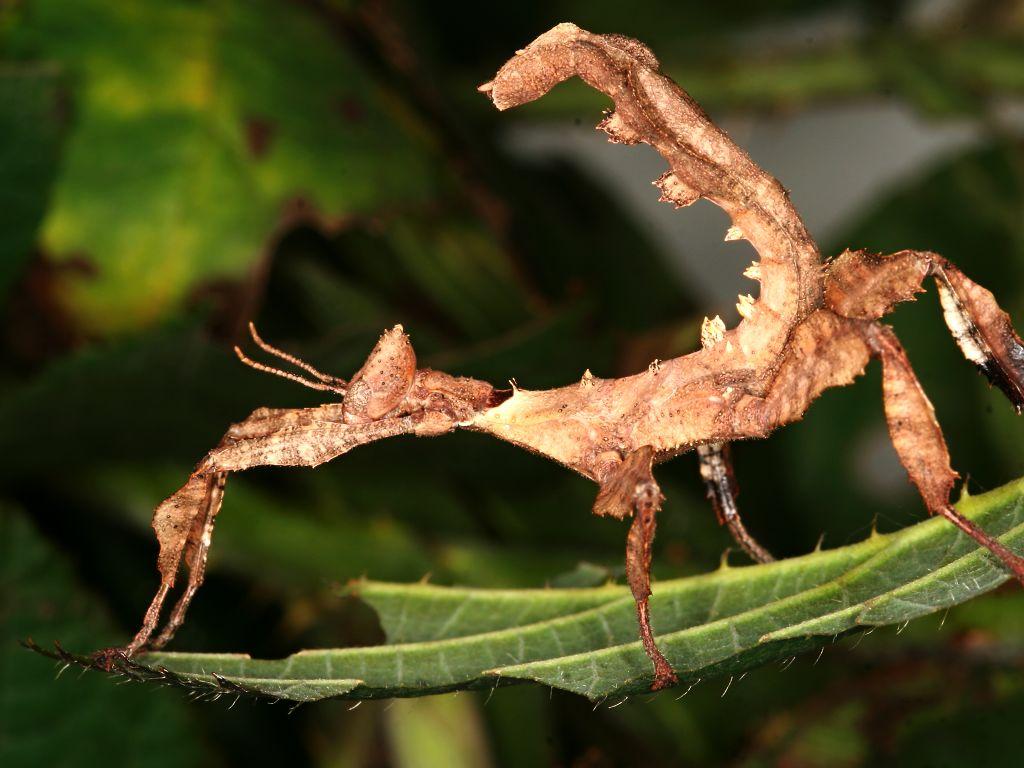
Extatosoma tiaratum photo Reptarium
Camouflage can be part of every stage of a phasmid's life. The giant prickly stick insect (Extatosoma tiaratum) imitates crumpled foliage as an adult, its nymphs look like ants and then bark.

Giant Prickly Stick Insect / Macleays Spectre (Extatosoma tiaratum) Care Sheet Keeping Exotic Pets
The giant prickly stick insect (Extatosoma tiaratum) is one of the most popular stick insects kept as pets. This stick insect is pretty large and has beautiful camouflage which is typical for phasmids. In this practical care guide, we will discuss how you take good care of your giant prickly stick insect. We will discuss housing, creating the correct environment, the best feeding practice and.

LICHEN Stick Insect (Extatosoma tiaratum "Innisfail") Stick insect, Stick bug, Insects
The Spiny Leaf Insect ( Extatosoma tiaratum) is also known as Giant Prickly Stick Insect or Macleay's Spectre Stick Insect. The name may change, but their odd appearance stays the same. When laying her eggs, the female flicks the eggs from her abdomen down to the ground. The eggs of the stick insect resemble seeds, and ants often carry them.
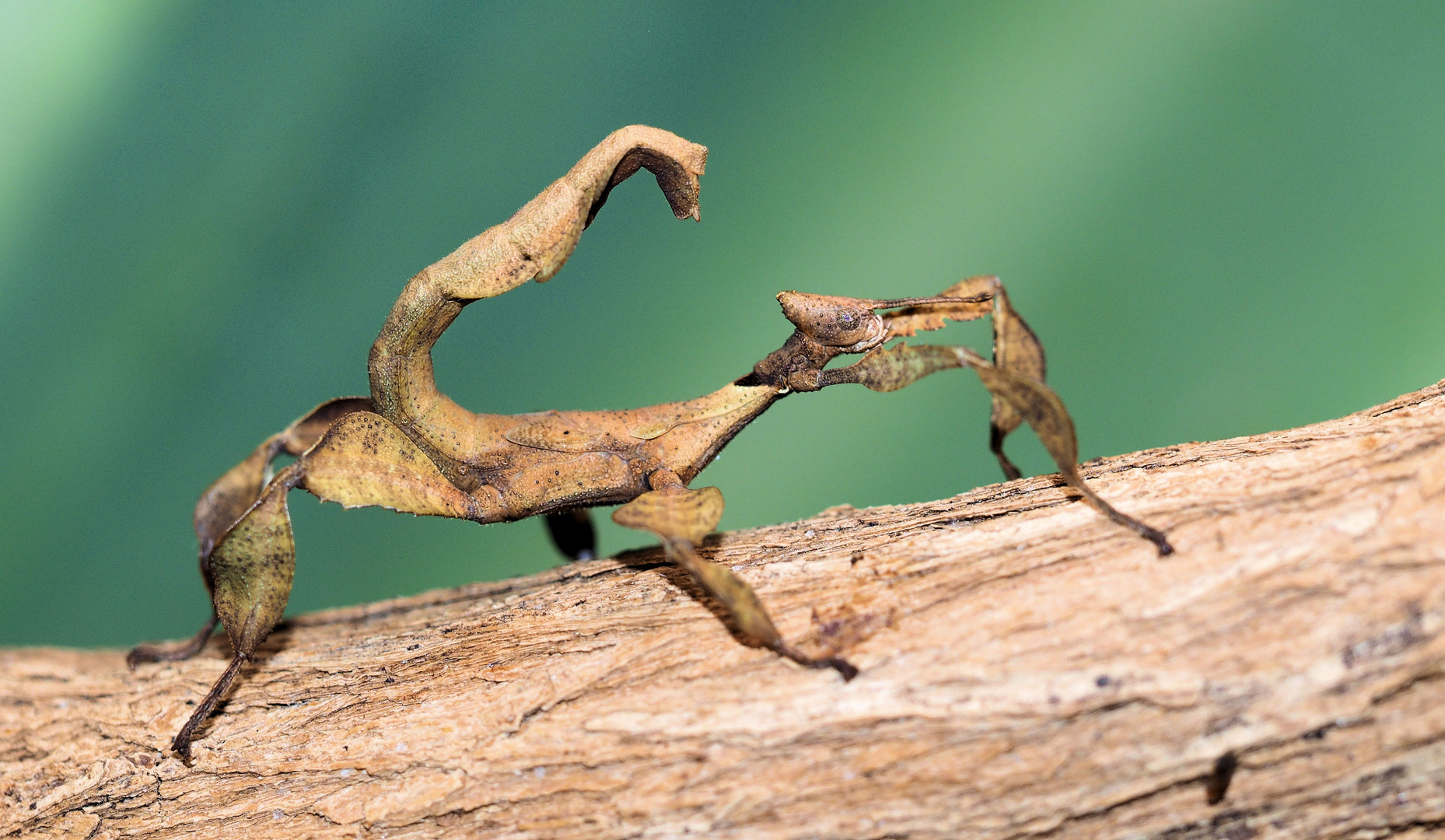
Extatosoma tiaratum Jungtier Foto & Bild fotos, makro, natur Bilder auf
One interesting Australian phasmid is the Spiny Leaf Insect (Extatosoma tiaratum), also called Macleay's Spectre Stick Insect. The females of this species have very large bodies but very short wings and are unable to fly. The males are long and slim with fully developed wings.

Extatosoma tiaratum Cedric Vaucher Flickr
Life Cycle. All phasmids begin life as an egg which is dropped from the end of the females abdomen and falls to the ground at the base of the tree or shrub. Thousands of eggs are laid during the females life. The eggs of the Spiny Leaf Insect, Extatosoma tiaratum, have a knob, called a capitulum, which is attractive to ants. Ants carry the eggs.

Extatosoma Tiaratum 3 day old Extatosoma Tiaratum. The eye… Flickr
The Spiny Leaf Insect has some fascinating twists in its life cycle. The flightless female, which can grow to 160 mm, drops her eggs at the base of trees. She does not need to mate to produce eggs (parthenogenesis), but any hatchlings will all be females that are genetically identical to her. If she mates with a much smaller winged male, the.
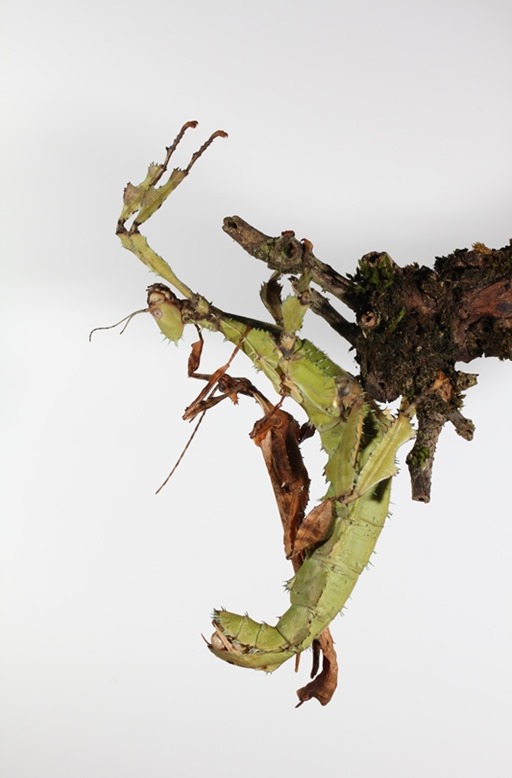
Extatosoma_tiaratum.jpg Insectes & Compagnie
Right: schematic summary of E. tiaratum life cycle, showing the transient spatial niche of newly ha tched nymphs which ascend from the forest floor to tree canopies.

Extatosoma tiaratum, el llamado insecto líquen. ¡Descúbrelo!
Brock and Hasenpusch, 2007), are primarily herbivorous and have a hemimetabolous life cycle. The study species are a sexually dimorphic species with the spiny wingless females. Adult Extatosoma tiaratum feeding on a mixed diet of tree lucerne, Eucalyptus spp, Acacia spp., Agonis and holme oak laid the eggs used in this experiment. Nymphs hatched

Spiny Leaf Insect Extatosoma tiaratum Adult female YouTube
Extatosoma tiaratum skin shedding from hatching to adulthood. The Phasmid Study Group Newsletter (PSG Newsletter) 49:7. Life Stories of Australian Insects, Dymock's Book Arcade, Sydney 34, fig Brock & Hasenpusch. 2007. Studies on the Australian stick insects (Phasmida), including a checklist of species and bibliography, Zootaxa, Magnolia.

My insects world Extatosoma tiaratum
PSG Number 9: Species Name Extatosoma tiaratum: Author (Describer) Macleay: Year Described 1827: Subfamily Extatosomatinae: Locality Australia: Culture Status

Extatosoma tiaratum a photo on Flickriver
Spiny Leaf Insect, Extatosoma tiaratum. Spiny Leaf Insects are stick insects - also known as phasmids. Adult Spiny Leaf Insects are more like dead leaves than sticks however, and are very hard to spot in the wild as they hang motionless from foliage. They are leaf-eaters like other phasmids, and are found in the north east of Australia, where.

Extatosoma Tiaratum
Extatosoma tiaratum. ( Macleay, 1826) Extatosoma tiaratum, commonly known as the spiny leaf insect, the giant prickly stick insect, [2] Macleay's spectre, [3] or the Australian walking stick, is a large species of Australian stick insect. [4] [5] The species has the Phasmid Study Group number PSG9. [6]
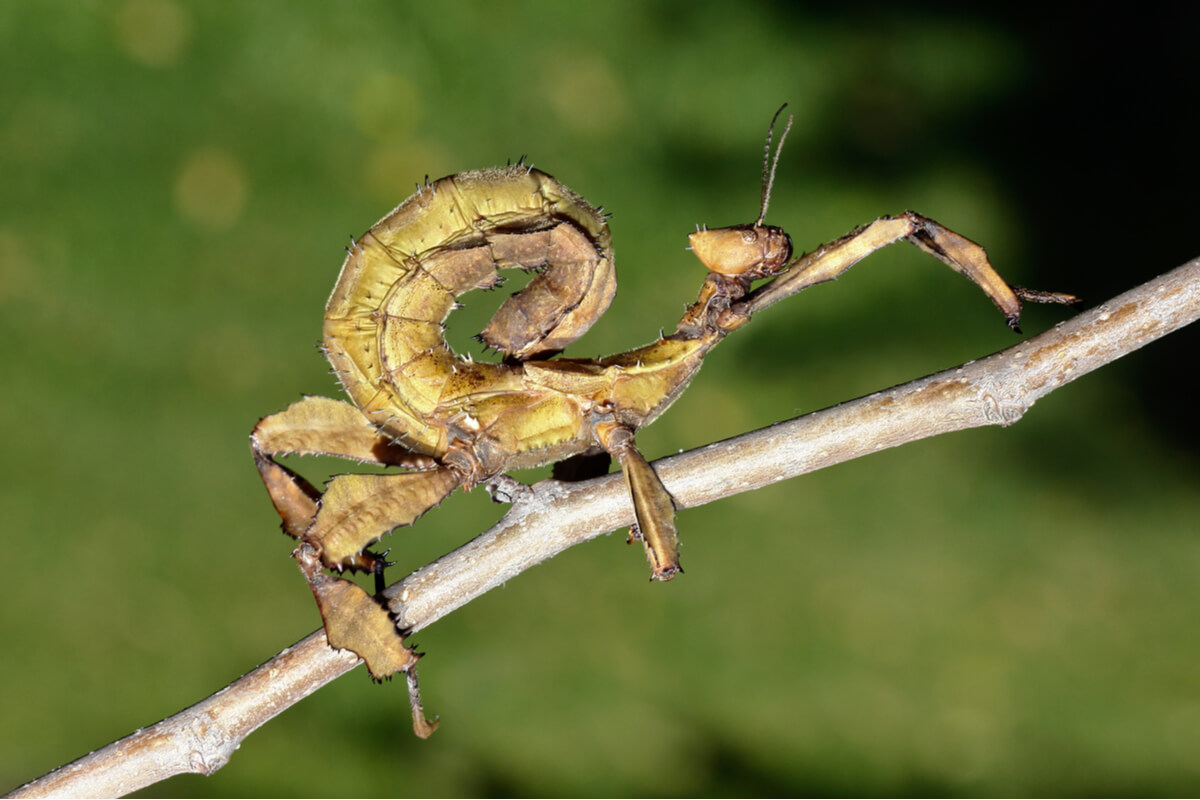
Extatosoma tiaratum cuidados y cría en cautiverio Mis Animales
E. tiaratum are generalists, feeding on a variety of eucalyptus ( Brock and Hasenpusch 2009), and may forage on different tree species during their life, so it is unlikely that they would benefit from matching the movement of one type of plant. Therefore, we would not expect a perfect motion overlap between the insect and the background plants.

a Adult Extatosoma tiaratum female and male (locality Australia,... Download Scientific Diagram
Source: Wikipedia. Extatosoma tiaratum, commonly known as the giant prickly stick insect, the spiny leaf insect, Macleay's spectre, or the Australian walking stick, is a large species of stick insect endemic to Australia. The species has the Phasmid Study Group number PSG9.

Hatching spiny leaf insect nymph (Extatosoma tiaratum) YouTube
Life Cycle [] Extatosoma tiaratum are able to reproduce both parthenogenetically or sexually The eggs hatch after approximately 4 months. Eggs that are laid via parthenogenesis can take more than 9 months before the emergence of nymphs. The juvenile nymphs are usually black in colour with slight hints of red on the abdomen.
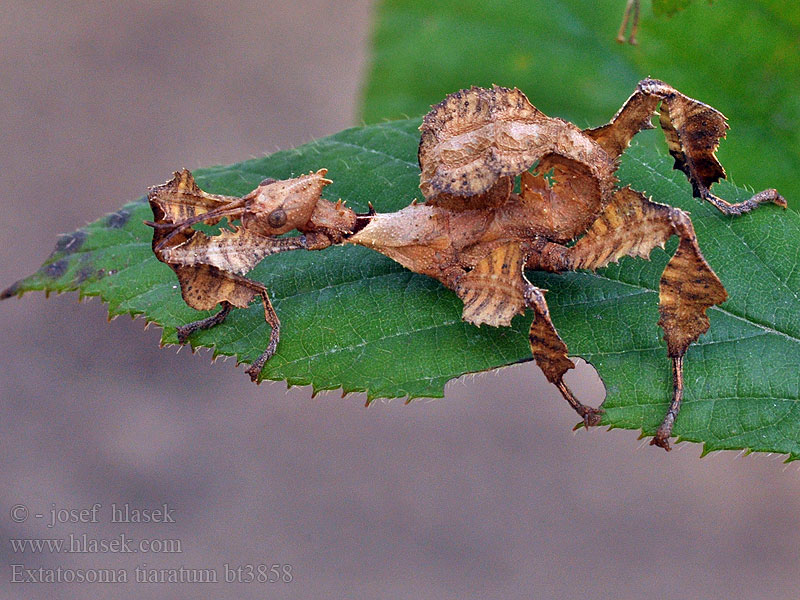
Extatosoma tiaratum Straszyk australijski
The Giant Prickly Stick Insect, also refferred to as Macleay's Spectre Stick Insect, is a large stick insect from Australia and New Guinea. Its scientific Latin name is Extatosoma tiaratum. Like almost all stick insects it has a Phasmid Study Group number or psg number: psg 9. This is a very popular species of stick insect, because of the.